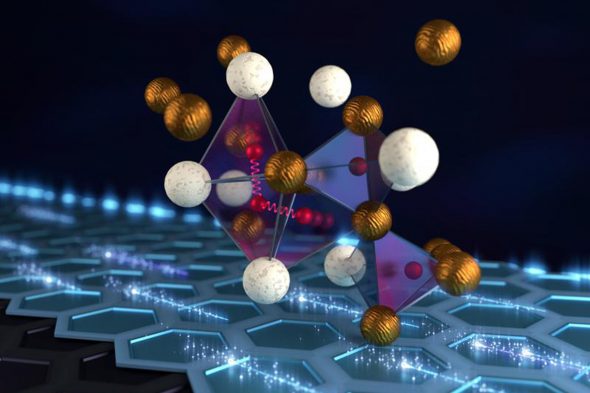Closely spaced hydrogen atoms could facilitate superconductivity in ambient conditions

Hydrogen atoms in a metal hydride material are much more tightly spaced than had been predicted for decades, according to a new study from an international team of researchers.
Their findings, which are published in the Proceedings of the National Academy of Sciences, detail the first observations of such small hydrogen-hydrogen atomic distances in the metal hydride and suggest that the newly discovered feature could help guide the creation of superconductors that operate near room temperature and pressure.
Russell Hemley, UIC professor of physics and chemistry and LAS Distinguished Chair in the Natural Sciences in the College of Liberal Arts and Sciences, and colleagues from Switzerland, Poland and the U.S. conducted neutron scattering experiments on samples of zirconium vanadium hydride at the Spallation Neutron Source at the Department of Energy’s Oak Ridge National Laboratory.
Superconductors carry electricity without any energy loss due to resistance. Superconductors operating at or near room temperature would revolutionize energy efficiency in a broad range of consumer and industrial applications.
Last year, Hemley’s group discovered the current highest temperature superconductor, lanthanum decahydride, which starts superconducting at temperatures as high as 8 degrees Fahrenheit, but unfortunately also requires enormous pressures as high as 22 million pounds per square inch, or nearly 1,400 times the pressure exerted by water at the deepest part of Earth’s deepest ocean.
“For decades, a ‘holy grail’ for scientists has been to find or make a material that superconducts at room temperature and atmospheric pressure, which would allow engineers to design it into conventional electrical systems and devices,” Hemley said.
Studies of model systems like the zirconium vanadium hydride using facilities like the Spallation Neutron Source could play a major role in designing and creating these novel materials.
To learn more, visit PNAS.
